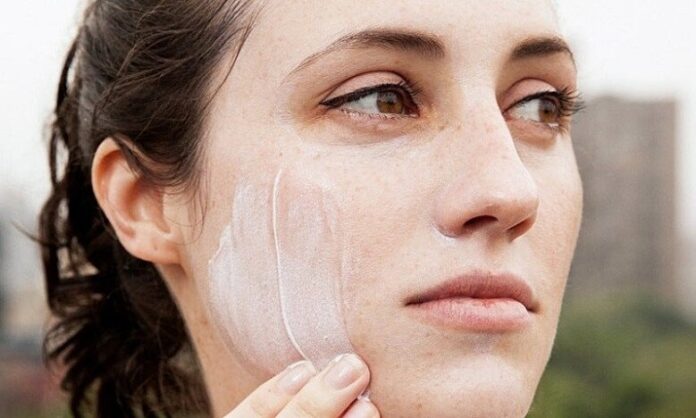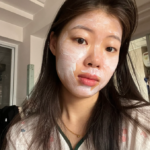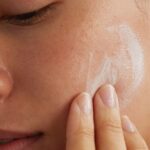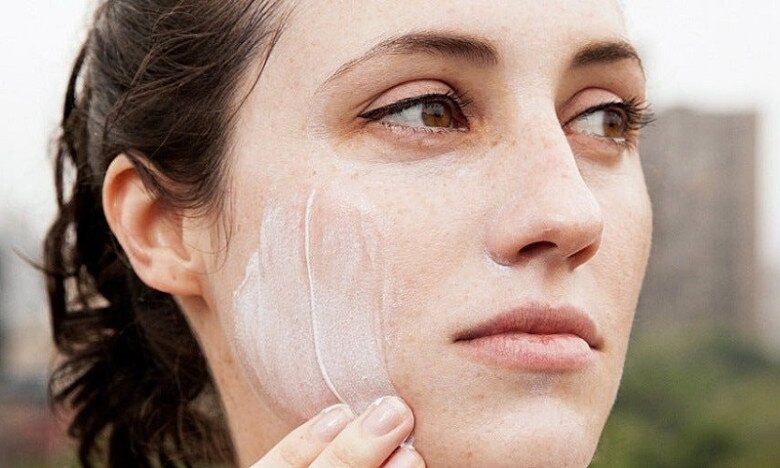
White streaks and clumping sunscreen can be a “nightmare” for women, especially when they are outdoors.
Some women tend to switch products immediately after the first use, but the truth is that the fault does not necessarily lie with the product, but with the seemingly harmless habits of using sunscreen every day. The following are common reasons why the finish is “moldy and messy” and how to “rescue” the skin in the hot sun.
1. Using too many products in the same base layer
Many people have the habit of taking good care of their skin before going out – serum, moisturizer, and then sunscreen. But applying too many layers in a short time can cause the skin not to absorb, creating a layer of excess moisture. When you continue to pile on sunscreen, the layers of products “push” each other, causing stickiness, blotching, and easily creating white streaks.

Applying too many skincare products before sunscreen without spacing out the time is one of the main reasons why the sunscreen layer is difficult to “tape” onto the skin.
Women should space out the time between skincare steps, especially between moisturizing and sunscreen application. If you have oily or combination oily skin, choose a light, gel-based moisturizer and wait 3-5 minutes for each layer before moving on to the next step. For dry skin, wait for the moisturizer to stabilize completely before applying sunscreen to avoid. If the finish still looks moldy, try patting on 1-2 drops of facial oil (rosehip, squalane) after moisturizing to “lock in moisture” and smooth out the skin.
2. Not patting and blending the sunscreen thoroughly
Physical sunscreens often contain zinc oxide or titanium dioxide – which are white opaque substances, prone to leaving streaks if not blended properly. Some people only swipe casually or apply in large patches, causing uneven coverage and a “moldy” feeling, looking like a faulty makeup base.

Sunscreen needs to be applied using the correct technique to ensure even coverage on the skin, especially if you are going to apply makeup after sunscreen.
A clever way to apply sunscreen shared by TikToker makeup artist Jane here on her personal page.
The basic technique for applying sunscreen is to divide the sunscreen into small dots (forehead, cheeks, chin, nose) and then use a clean finger or a dedicated sponge to pat gently from the inside out.
For dry skin, if the sunscreen clumps or slides off, lightly spray a layer of facial mist before blending to increase moisture, making the process easier and more even.
3. Using too much product at once
Everyone knows that applying enough sunscreen is essential for effective skin protection. But “dumping” a large amount of product on the skin at once will easily make the finish thick, clumpy, and create a white, “moldy” effect.
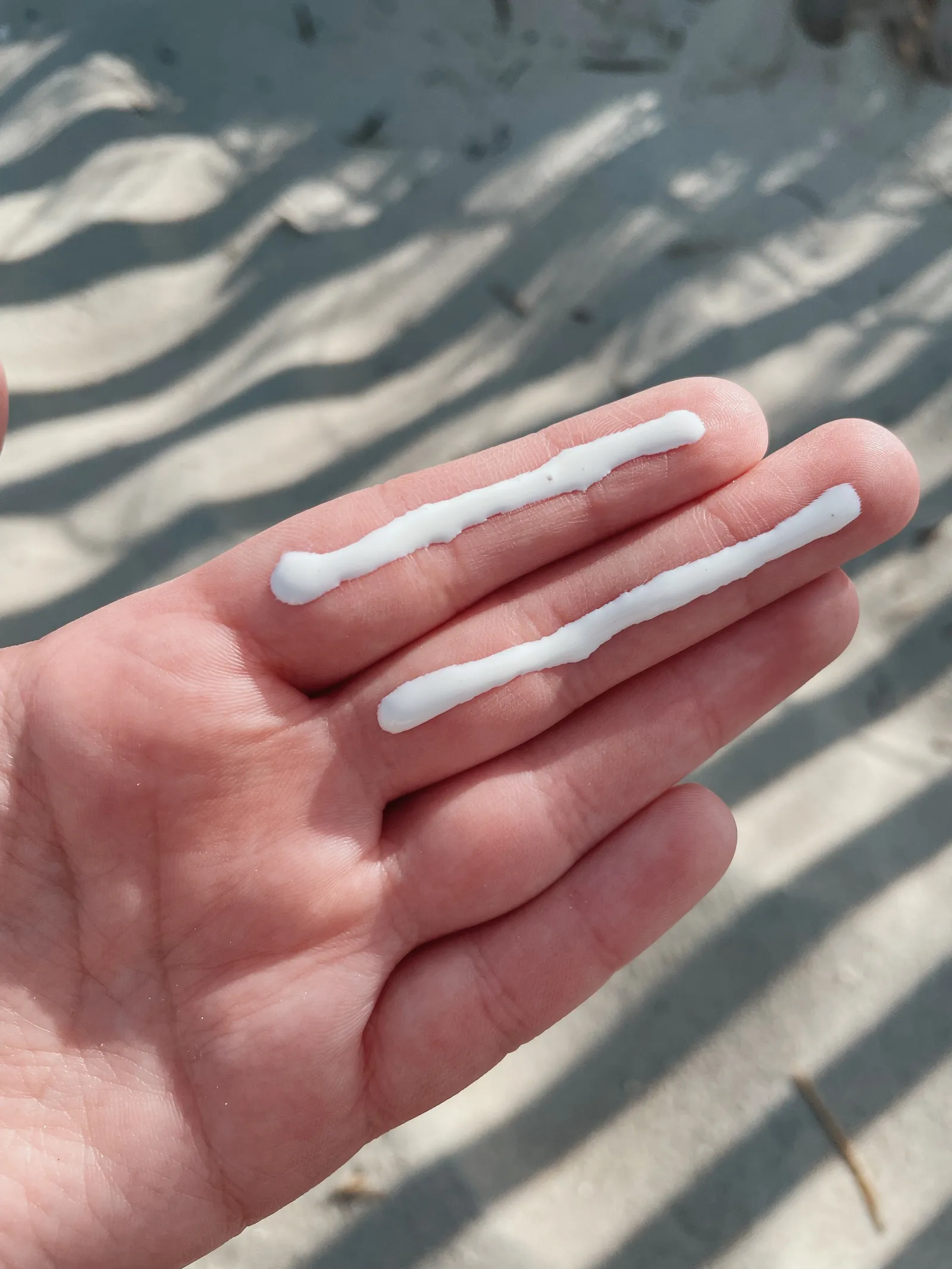
Using the right amount of sunscreen will protect the skin while preventing pore clogging and uneven coverage.
To apply sunscreen effectively and avoid an uneven finish, divide the sunscreen into two parts on two fingers, apply half to one side of the face, pat gently, wait a minute, and then apply to the other side. This method allows the skin to absorb gradually, creating a thin, natural finish while providing sufficient protection.
4. Using the wrong type of sunscreen for your skin type
Using a thick, creamy sunscreen on oily skin is like having an “oil pot” on your face all day. Conversely, using a gel-based sunscreen on dry skin without providing enough moisture can lead to white streaks as the product dries out and becomes uneven.

Each skin type requires a specific type of sunscreen. Using unsuitable sunscreen ingredients can lead to skin irritation or uneven coverage.
Here are some formulas to consider when purchasing sunscreen this summer:
– Oily skin: Choose gel, fluid, or milk sunscreens, look for “non-comedogenic” and “oil-free” labels, and opt for a matte or semi-matte finish. Prioritize chemical sunscreens as they blend better with the skin.
– Dry skin: Look for moisturizing ingredients such as glycerin, ceramides, and panthenol. Cream or milk-based sunscreens are good choices for dry, flaky skin.
– Combination skin: You can mix and match – use gel-based sunscreen on the T-zone and a light cream on the cheeks, for example.
– Sensitive skin: Opt for physical sunscreens with 100% zinc or titanium, free of fragrances and alcohol.
5. Not checking product compatibility
Not all products get along well together. Some sunscreens may react with serums or active ingredients (such as vitamin C, AHA, retinol…) or acidic ingredients, altering the formula and causing clumping and “irritation” on the skin.
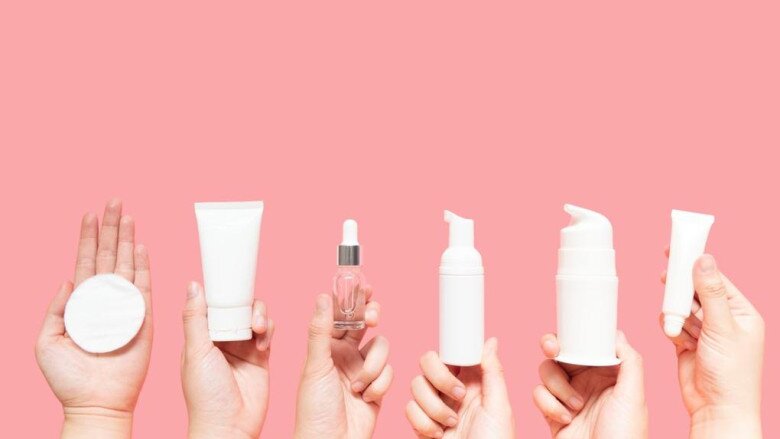
Treatment products can also be irritating if the sunscreen contains incompatible ingredients.
If you are using treatment products like tretinoin, retinol, or vitamin C, avoid applying them directly before sunscreen. Instead, use a protective moisturizer as a buffer. If you must use them together, wait a minimum of 10-15 minutes between applications.
Additionally, when switching to new products, it is advisable to test their compatibility on the palm of your hand first. If clumping or unevenness occurs, change the order of application or consider switching to a different base product.


























